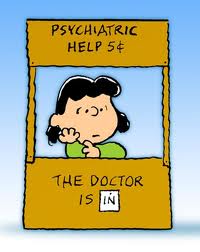 Recently, I attended the meeting of the North American Menopause Society (NAMS) in Washington DC along with 1500 other health professionals. The bottom line: Estrogen is not the devil, but it is not the panacea for all things female!
Recently, I attended the meeting of the North American Menopause Society (NAMS) in Washington DC along with 1500 other health professionals. The bottom line: Estrogen is not the devil, but it is not the panacea for all things female!
When the large Women's Health Initiative was halted in 2002 due to some unexpected findings in women on hormone treatment, the use of hormones significantly dropped. However, many women found that their most bothersome symptoms returned and some went back on HT with a bit more concern.
The conference focused on new data, much of it refined to look at subsets of women. It has become significantly clearer that all women are NOT alike when it comes to their health status at the time menopause begins, their age at onset, and the intensity of symptoms. Thus, generalizing outcomes to all women makes little sense.
Here are a few key points that were discussed at the meeting and are currently being studied by researchers:
- Ill effects in the WHI participants were more predominant in women who were 10 years post menopause when it came to heart disease. The latest research suggests that estrogen can make atherosclerosis (one cause of heart disease) worse in women who already have it, but it may delay or prevent it in women who still have healthy arteries.
- There is an increased risk of breast cancer in hormone users but the absolute numbers were small and were more prevalent among those who took HR that contained both estrogen and progesterone. Women on estrogen alone had risks similar to placebo. There is growing interest in the role certain types of progesterone used in combination therapy play in breast cancer risk.
- There is a major concern about osteoporosis and bone fractures among aging women whose estrogen levels are dropping. As one researcher put it, "breaking a hip (in older women) can kill you faster than breast cancer". Approximately 50% of women over age 50 will have at least one fracture and we know that hormone therapy significantly reduces that risk. Understanding personal risk profiles for these two conditions should be part of the decision process.
- While there are more drugs on the market to help maintain bone health, there is more long term data available on their use that is indicating some alarming side effects with prolonged use. Some of these side effects may be worse than those related to hormone therapy.
- Researchers are finding that the stages of the menopause transition are quite complex and there may be several levels of the transition that may need different interventions.
- Vaginal atrophy in women including breast cancer survivors can be devastating and reasonable treatment options are sorely needed.
- Since the WHI, there are new treatment options available today for menopause symptoms using different drug formulas and different means of applications (pills, patches, creams, gels and sprays) that may have reduced risk profiles.
That's just a sampling of the many topics discussed at this conference. Our Institute has been awarded a grant from the Evergreen Initiative at Northwestern Memorial Hospital Foundation to create a decision making tool for women who are menopausal and having bothersome symptoms. As a result, we will be focusing on all aspects of menopause this year through our educational and fact finding events and I encourage you to follow our blog for our latest findings.

 with the men in your life. Long-term adminstration of the dietary supplement saw palmetto, even at three times the usual dose, did not reduce symptoms of prostate enlargement significantly better than placebo in a large group of middle-aged men, according to the most rigorous study of the popular herb.
with the men in your life. Long-term adminstration of the dietary supplement saw palmetto, even at three times the usual dose, did not reduce symptoms of prostate enlargement significantly better than placebo in a large group of middle-aged men, according to the most rigorous study of the popular herb. In one of the largest genomic studies ever, an international research consortium identified 29 genetic variations that influence blood pressure. More than half of these variants were previously unknown. The findings provide insights into the biology of blood pressure and may lead to new therapeutic strategies.
In one of the largest genomic studies ever, an international research consortium identified 29 genetic variations that influence blood pressure. More than half of these variants were previously unknown. The findings provide insights into the biology of blood pressure and may lead to new therapeutic strategies. [09-26-2011] The U.S. Food and Drug Administration (FDA) is informing the public that it has not yet reached a conclusion, but remains concerned, about the potential increased risk of blood clots with the use of drospirenone-containing birth control pills. FDA has completed its review of the two 2011 studies that evaluated the risk of blood clots for women who use drospirenone-containing birth control pills, previously mentioned in FDA's Drug Safety Communication issued on May 31, 2011. FDA is continuing its review of a separate FDA-funded study that evaluated the risk of blood clots in users of several different hormonal birth control products (contraceptives). Preliminary results of the FDA-funded study suggest an approximately 1.5-fold increase in the risk of blood clots for women who use drospirenone-containing birth control pills compared to users of other hormonal contraceptives.
[09-26-2011] The U.S. Food and Drug Administration (FDA) is informing the public that it has not yet reached a conclusion, but remains concerned, about the potential increased risk of blood clots with the use of drospirenone-containing birth control pills. FDA has completed its review of the two 2011 studies that evaluated the risk of blood clots for women who use drospirenone-containing birth control pills, previously mentioned in FDA's Drug Safety Communication issued on May 31, 2011. FDA is continuing its review of a separate FDA-funded study that evaluated the risk of blood clots in users of several different hormonal birth control products (contraceptives). Preliminary results of the FDA-funded study suggest an approximately 1.5-fold increase in the risk of blood clots for women who use drospirenone-containing birth control pills compared to users of other hormonal contraceptives. A drug used to treat cancer may also be effective in diseases that cause scarring of the internal organs or skin, such as pulmonary fibrosis or scleroderma.
A drug used to treat cancer may also be effective in diseases that cause scarring of the internal organs or skin, such as pulmonary fibrosis or scleroderma. African-American men living in areas with low sunlight are up to 3 ½ times more likely to have Vitamin D deficiency than Caucasian men and should take high levels of Vitamin D supplements, according to a new study from Northwestern University Feinberg School of Medicine.
African-American men living in areas with low sunlight are up to 3 ½ times more likely to have Vitamin D deficiency than Caucasian men and should take high levels of Vitamin D supplements, according to a new study from Northwestern University Feinberg School of Medicine. SEND US YOUR IDEAS! Being healthy and safe takes commitment, but it doesn't have to be time-consuming, painful, or boring. Most things are simple and take so little time that you'll wonder why you've been avoiding them. Even small steps can mean big rewards in preventing illness and injury.
SEND US YOUR IDEAS! Being healthy and safe takes commitment, but it doesn't have to be time-consuming, painful, or boring. Most things are simple and take so little time that you'll wonder why you've been avoiding them. Even small steps can mean big rewards in preventing illness and injury. Factoids on headaches!
Factoids on headaches! Researchers have converted stem cells from the human endometrium into insulin-producing cells and transplanted them into mice to control the animals’ diabetes. The endometrium, or uterine lining, is a source of adult stem cells. Normally, these cells generate uterine tissue each month as part of the menstrual cycle. Like other stem cells, however, they can divide to form other kinds of cells.
Researchers have converted stem cells from the human endometrium into insulin-producing cells and transplanted them into mice to control the animals’ diabetes. The endometrium, or uterine lining, is a source of adult stem cells. Normally, these cells generate uterine tissue each month as part of the menstrual cycle. Like other stem cells, however, they can divide to form other kinds of cells. Where do you get your health information? Doctors are often too busy to spend much time on preventive care. The internet is alive with personal and commercial blogs on the latest health fads. And most recently, politicians are getting into the act.
Where do you get your health information? Doctors are often too busy to spend much time on preventive care. The internet is alive with personal and commercial blogs on the latest health fads. And most recently, politicians are getting into the act.